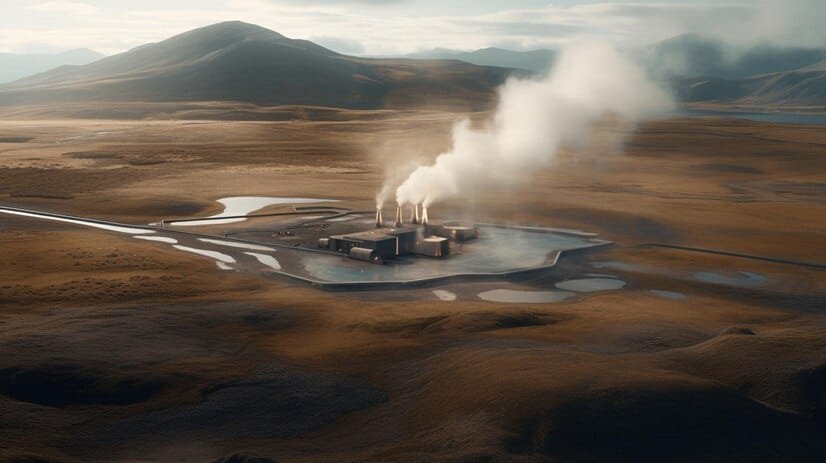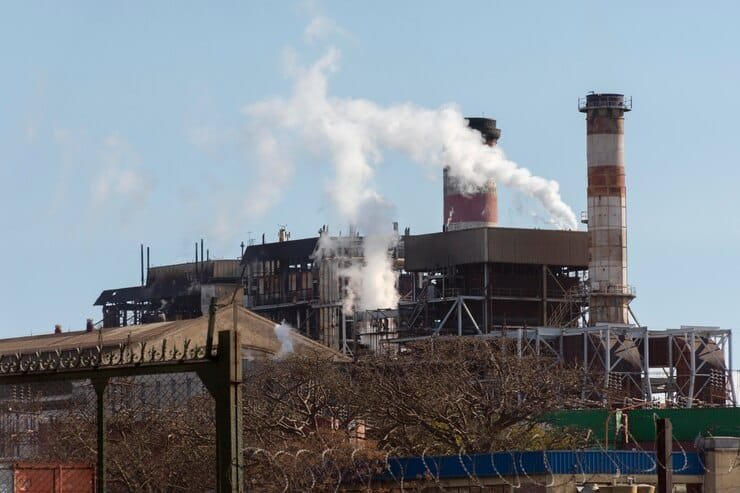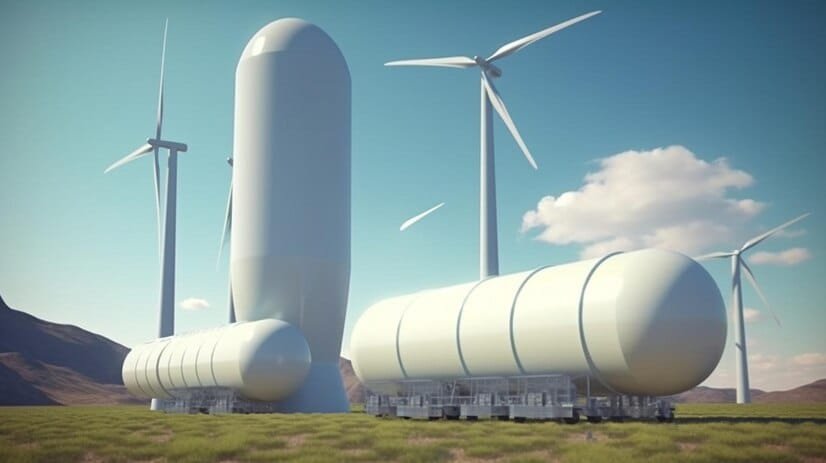Coal’s Demise: Is the Thermal Power Sector Facing Extinction?
Coal’s Demise: Is the Thermal Power Sector Facing Extinction? – Overview
The hum of coal-fired power plants, a sound synonymous with industrial progress for over a century, is fading. Across the globe, a significant shift is underway, challenging the very foundation of the thermal power sector as we know it. This isn’t just about shifting energy preferences; it’s a complex interplay of environmental concerns, technological advancements, and evolving economic realities.
- The Current Landscape: Imagine a world map, once heavily dotted with coal-fired power plants – symbols of reliable, baseload power. Today, that map is changing. While coal remains a significant player in many regions, particularly in developing nations, the trend is undeniable: a decline in new coal plant constructions and a gradual phasing out of existing ones in developed countries. (Insert image here: A world map showing coal plant distribution, perhaps with color-coding representing plant age or planned decommissioning.)
- Why This Matters to You: Whether you’re a seasoned professional in a coal-fired power plant or a business leader in the thermal power sector, understanding this shift is not merely an academic exercise; it’s crucial for your future. This transition impacts not only operations and investments but also the very skills and expertise required to navigate the evolving energy landscape. The decisions made today will determine the success and sustainability of your operations in the years to come.
- Navigating the Transition: This blog post will provide a step-by-step analysis of the forces driving the decline of coal. We will explore:
- Environmental regulations and carbon emission targets: How are stricter regulations impacting the viability of coal-fired power?
- The rise of renewable energy sources: What’s the competitive advantage of solar, wind, and other renewables? (Insert image here: A comparison chart of energy sources and their carbon footprint.)
- Technological advancements in energy storage: How are innovations in battery technology and other storage solutions affecting the role of coal?
- Economic factors and investment strategies: What are the financial implications for existing coal plants, and what alternative strategies can ensure a smooth transition?
By the end of this blog post, you will possess a clearer understanding of the challenges and opportunities facing the thermal power sector, equipping you to make informed decisions for the future. Let’s delve into the specifics and navigate this critical transition together.
Analyzing the Coal-fired Power Plants Market: Trends & Actionable Insights
The coal-fired power plant market is undergoing a significant transformation, driven by environmental concerns, technological advancements, and evolving energy policies. Understanding these trends is crucial for strategic decision-making.

1. Adverse Trends:
- 1.1. Stringent Environmental Regulations: Governments worldwide are increasingly implementing stricter emission standards (e.g., limits on sulfur dioxide, nitrogen oxides, and particulate matter) and carbon pricing mechanisms (carbon taxes, cap-and-trade systems). This significantly increases operational costs for coal plants, making them less competitive.
- Impact: Reduced profitability, potential plant closures, need for expensive retrofitting.
- Example: Many coal plants in the EU have been forced to close or undergo costly upgrades to meet stringent emission limits, leading to a decline in coal-fired power generation.
- 1.2. Growing Renewable Energy Competition: The cost of renewable energy sources like solar and wind has plummeted, making them increasingly competitive with coal. Government subsidies and favorable policies further accelerate their adoption.
- Impact: Reduced market share for coal, pressure on electricity prices.
- Example: In many regions, new renewable energy projects are being commissioned at a faster rate than coal plants are being built, leading to a shift in the energy mix.
- 1.3. Social Opposition & Public Pressure: Growing public awareness of climate change and the environmental and health impacts of coal has led to increased social opposition to new coal power plants and even the continued operation of existing ones.
- Impact: Difficulty securing permits for new projects, potential for legal challenges and protests.
- Example: Proposed coal plant projects in several countries have faced significant public opposition and been subsequently cancelled.
2. Positive Trends (Though Limited):
- 2.1. Technological Advancements in Carbon Capture, Utilization, and Storage (CCUS): While still expensive, CCUS technologies offer the potential to significantly reduce CO2 emissions from coal plants. Further development and cost reduction could breathe new life into the industry.
- Impact: Possibility of extending the lifespan of existing plants and enabling new, cleaner coal power projects.
- Example: The Petra Nova carbon capture project in Texas (though now closed) demonstrated the technical feasibility of CCUS on a commercial scale, paving the way for future projects.
- 2.2. Coal’s Role in Energy Security & Baseload Power: In certain regions, coal still plays a vital role in ensuring energy security and providing reliable baseload power, particularly during periods of low renewable energy generation.
- Impact: Continued demand for coal in specific regions with limited renewable energy infrastructure.
- Example: Some countries heavily reliant on coal are investing in modernizing existing plants to improve efficiency and reliability, recognizing their continued importance in the short to medium term.
3. Actionable Insights:
- Mitigating Adverse Trends: Companies should prioritize:
- Investing in CCUS technology: Explore opportunities to incorporate CCUS into existing plants or new builds, even if costly, to increase sustainability.
- Diversification: Explore opportunities in related sectors, such as energy efficiency services or renewable energy technologies.
- Advocacy: Engage with policymakers to influence regulations and create a level playing field that accounts for the role of coal in ensuring energy security.
- Leveraging Positive Trends:
- Focus on high-efficiency, low-emission technologies: Invest in advanced coal combustion technologies that minimize pollutant emissions.
- Develop partnerships: Collaborate with renewable energy companies to integrate coal power with renewables, providing flexible baseload capacity.
Conclusion:
The future of the coal-fired power plant market is challenging but not necessarily bleak. By strategically adapting to the adverse trends and proactively leveraging the limited positive ones, companies can enhance their resilience and position themselves for a sustainable future, even within a rapidly changing energy landscape. This requires a forward-looking strategy combining technological innovation, regulatory engagement, and business model diversification.
1. Manufacturing: A cement factory relies on a nearby coal-fired power plant for a consistent and affordable energy supply to power its kilns. This predictable energy source minimizes production downtime and ensures consistent output, crucial for meeting customer demands. The factory negotiates a long-term power purchase agreement (PPA) with the plant, guaranteeing a stable price and securing its energy needs.
- Healthcare: A large hospital system uses coal-fired power to run its critical infrastructure—life support systems, operating rooms, and data centers. Backup generators powered by coal further ensure uninterrupted service during outages. The hospital assesses its energy consumption patterns, plans for peak demand, and works with the power plant to secure the required capacity and redundancy to maintain patient safety and service continuity.
- Data Centers: A technology company operating large data centers in a region with limited renewable energy sources relies heavily on coal-fired power for its substantial electricity needs. This enables it to maintain constant operation of its servers and network infrastructure, supporting its clients’ business operations. The company invests in energy efficiency measures within the data center to offset the environmental impact, and explores potential future shifts towards renewable sources where feasible.
- Automotives: A car manufacturing plant utilizes coal-fired electricity for its assembly lines, robotic welding systems, and paint shops. Consistent power is vital for the precise, automated processes of car production. The plant actively monitors energy consumption and implements energy management strategies to improve efficiency and reduce coal dependence over time.
- Mining: Coal mining itself often utilizes on-site coal-fired power plants to supply electricity for excavation, processing, and transportation. This reduces reliance on external power grids and ensures energy availability even in remote locations. However, these mines must comply with strict environmental regulations to mitigate the impacts of coal combustion.
- Food Processing: A large food processing facility uses coal-fired electricity to power its refrigeration systems, production lines, and packaging equipment. Reliable power is paramount for maintaining product quality and preventing spoilage. The plant may explore efficiency improvements and alternative energy sources to reduce long-term energy costs and minimize environmental concerns.
These examples highlight the crucial role of coal-fired power plants in various industries. However, businesses should continuously evaluate the economic and environmental implications of their energy choices and actively seek ways to transition towards more sustainable energy sources when feasible and economically viable. This might include negotiating PPAs with renewable energy providers or investing in on-site renewable energy generation.
1. Investing in Advanced Flue Gas Desulfurization (FGD) Systems: Since 2023, several companies have focused on upgrading existing FGD systems or installing more advanced versions. This includes employing technologies like wet scrubbing with enhanced chemical additives for higher SO2 removal efficiency or exploring dry sorbent injection systems for better cost-effectiveness and reduced water usage. For example, a company might partner with a chemical supplier to develop a new, more efficient absorbent for their wet scrubber, significantly reducing sulfur dioxide emissions without major plant overhauls.
- Embracing Digitalization and AI for Optimization: Companies are increasingly implementing digital twin technology and artificial intelligence (AI) to optimize coal-fired power plant operations. This involves using real-time data from sensors across the plant to predict potential equipment failures, fine-tune combustion processes for higher efficiency and lower emissions, and improve overall plant reliability. A specific example might be using AI to predict ash build-up in heat exchangers, allowing for proactive maintenance and minimizing downtime.
- Strategic Acquisitions of Specialized Technology Providers: Inorganic growth strategies are prominent. Companies are acquiring smaller firms specializing in technologies like carbon capture, utilization, and storage (CCUS), advanced combustion techniques, or innovative waste heat recovery systems. For instance, a major power plant solutions provider might acquire a startup developing cutting-edge CO2 capture technology to integrate it into their offerings, creating a more comprehensive, lower-emission solution.
- Developing and Deploying Carbon Capture, Utilization, and Storage (CCUS) Technologies: This is a crucial strategy for extending the operational life of coal plants while minimizing their environmental impact. Companies are actively investing in research, development, and deployment of CCUS technologies, including direct air capture, post-combustion capture, and oxyfuel combustion. One example could be a company partnering with a research institution to test and refine a novel solvent for CO2 capture, aiming for higher efficiency and reduced energy consumption.
- Focusing on Lifecycle Asset Management and Predictive Maintenance: Companies are shifting towards proactive maintenance strategies to extend the lifespan of existing equipment and reduce unplanned outages. This involves deploying advanced sensor technologies, data analytics, and predictive modeling to anticipate potential failures and schedule maintenance before problems arise. A company might implement a comprehensive sensor network in a boiler to monitor its condition in real-time, predicting potential issues based on data analysis and avoiding costly emergency repairs.
- Exploring Co-firing with Biomass or other renewable fuels: Blending coal with sustainable alternatives, like biomass, is gaining traction as a means of reducing greenhouse gas emissions. Companies are investing in technologies and expertise to enable efficient and safe co-firing operations. This could involve adapting existing combustion systems to handle different fuel blends or developing new fuel handling and storage solutions to support co-firing operations.

Outlook & Summary: Coal’s Demise – A Looming Reality?
The thermal power sector is undergoing a dramatic transformation, and coal-fired power plants are at the epicenter. Over the next 5-10 years, expect a continued, if not accelerated, decline in coal’s dominance. This isn’t about overnight shutdowns, but a gradual, multifaceted shift.
- Decreased Investment: New coal-fired power plants are becoming increasingly rare due to stringent environmental regulations, high capital costs, and the growing availability of cheaper renewable energy sources. Expect further reductions in funding for new coal projects and potential divestment from existing ones.
- Increased Regulations: Governments worldwide are implementing stricter emission standards, forcing many coal plants to either upgrade significantly (an often uneconomical option) or face closure. This will lead to increased operational costs and potential legal battles.
- Renewable Energy Competition: Solar, wind, and other renewable energy sources are becoming cheaper and more efficient, making them a compelling alternative to coal. This competitive pressure will continue to erode coal’s market share.
- Technological Advancements: While coal technology is improving in terms of efficiency and emissions reduction, the pace of innovation is slower compared to renewables. This technological gap will widen further in the coming years.
Key Takeaway: Coal-fired power plants are not facing immediate extinction, but their long-term viability is severely threatened. The thermal power sector as a whole is diversifying, with renewables playing an increasingly significant role. Coal will likely remain part of the energy mix for some time, but its contribution will diminish considerably. While some existing plants may continue operating for the foreseeable future, focusing solely on coal is a risky long-term strategy.
This shift requires adaptation. Professionals in the coal sector must consider strategic diversification, exploring options like carbon capture technologies, retrofiting for cleaner operations, or transitioning to renewable energy projects.
The question for you is: How is your organization preparing for a future with significantly less coal in the energy mix?




